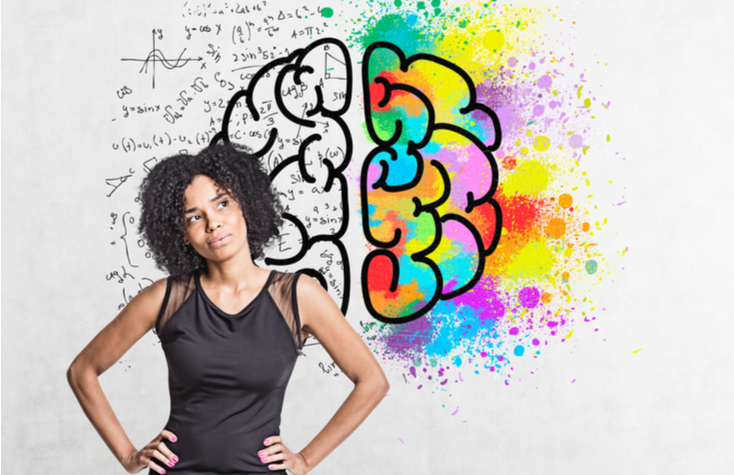The Importance of Neurocreativity for Brands
A picture tells a thousand words, but what if your picture’s message is lost in translation? Saddington Baynes Head of Insights Callum Gould talks about the importance of measuring emotions in campaigns and how to do it.

Failing to connect with your audience has shown to be disastrous for a brand. But, when you engage audiences on a deeper emotional level, you can create highly impactful campaigns. Focusing on achieving emotional connectivity through imagery means the way brands create such content has had to evolve. Gut feeling isn’t enough anymore.
Creating a positive “emotional pull” through imagery is key, but how do you decipher if an image or video will resonate with an audience on this deeper, nonconscious level? How can you make sure your imagery tells the right story? The most effective way to do so is to combine neuroscience - which gives you the ability to identify nonconscious, emotional responses to visual content - with the creative production process to optimise film, photography and visual effects.
Measuring Emotions in Campaigns
Emotions are difficult enough for individuals to identify and fully understand, let alone brands. And yet, when 95% of purchasing decisions happen nonconsciously, making sure brand imagery connects on an emotional level is key to campaign success. Especially when we consider that online imagery is the primary point of interaction for most brand’s consumers on a day to day basis.
The focus on emotion in advertising isn’t new. The IPA found that emotional campaigns are almost twice as likely to generate a higher ROI, compared to those based on rational thinking. And research-led creative execution of a campaign is central to delivering on that emotional response.
Creatives are no different to the rest of us in terms of understanding emotions - while they may have better intuition and aesthetic experiences to guide them, there’s no quantitative evidence behind that gut feeling. And what one person may think is an outstanding image, another may not understand at all.
While a healthy dialogue is required between agency, client and production studios, the best way to respond to questions on the emotional pull of a campaign is to find proof to back up your assumptions. That’s where neuroscience comes in.
Neuroscience Aiding Brand Success
Engagement Insights® is able to unlock deep, previously hidden emotional responses to campaign imagery. The resulting data gives creatives the ability to refine still and moving imagery, optimising its impact on the intended audience.
To expand this knowledge to brands, Saddington Baynes developed the Perception Index®, a study where we used Engagement Insights® to analyse campaigns from 50 well known brands across the automotive, beverage, cosmetic, fragrance and watch sectors.
The study tested campaign imagery against key marketing KPIs, measuring consumer’s emotional pull, feelings of progressiveness, distinctiveness and quality towards brand imagery. These metrics help determine if consumers had a positive or negative opinion of the content, giving us a better understanding of what consumer’s desires actually are.
Fifteen thousand respondents from the UK and US participated in the study, with global brands featured including BMW, Bentley, Dove, Mont Blanc, Honda, Tag Heuer and L’Oréal. By flashing campaign imagery alongside a number of different emotions to select from, participants have little or no ability to consciously control their reaction speeds. This helps alleviate the effects of unconscious biases or consciously filtered responses.
What Does the Data Show?
The benchmark allowed us to identify the following key trends:
- Millennials and Gen Z have much weaker emotional responses across all imagery than older generations
- Advertising fatigue is becoming a growing issue. Consumers are mentally bypassing certain types of campaigns due to a lack of distinction and market saturation of similar messages/advertising
- Imagery which is perceived as ‘progressive’ stimulates a stronger emotional pull
- Creative imagery that moves away from what is traditionally expected typically ranks higher across the marketing pillars
To further alleviate bias, campaigns were selected by only using imagery from a brand’s best selling product and most recent launch. A deep dive into the results quickly shows the different impact OOH, social and ‘point of purchase’ images have on brand loyalty and campaign success.
When reviewing mass customisation and personalisation, automotive brands pave the way with their marketing. Virtual showrooms, customisable virtual models and gaming engines have catapulted the consumer experiences for this sector. However, our results show, the imagery used at the ‘point of purchase’ on websites has the weakest associations across our KPIs against all the sectors tested. These images may be impacting user experiences and brand loyalty, which could be easily rectified using neurocreativity.
Meanwhile, the beverage and watches sectors are crafting more unique and distinctive brand imagery, however, consumer’s feel both these sectors lack modernism and premium quality. Overall, both these sectors have a weaker emotional pull, which may be detrimental to brand success, as their audiences are disengaged.
Consumer trust is intrinsically linked to brand loyalty and campaign effectiveness, and in order to build on that trust whilst engaging with your audience, brands must understand how their imagery makes customers feel. According to the Perception Index®, marketers’ efforts to combat distrust and promote brand loyalty within the cosmetics industry has been successful. Across all the sectors we tested, the cosmetics brands had the strongest positive associations across all the KPIs.
The results reveal customer’s implicit associations with brand campaign imagery. From this benchmark we are able to uncover consumer’s deeper emotional thoughts, in turn, helping the creative industry better understand the visual triggers in creative campaigns. By harnessing the power of neuroscience, every company now has the capacity to create more impactful customer experiences, using neurocreativity.